A standard 1964 dime is worth its silver value of a few dollars. The 1964-D (Denver) and 1964-P (Philadelphia) mint marks don’t significantly increase value unless in top condition or featuring errors. High-grade uncirculated coins (MS-67+) command premium prices. Valuable errors include off-center strikes, clipped planchets, and doubled dies, which can be worth hundreds of dollars depending on severity. Other collectible errors include missing-cladding, broadstrikes, and re-punched mintmarks. Note that 1964 SMS (Special Strike) coins don’t exist, as the SMS program began in 1965. Error coin values vary significantly based on error type and overall condition.
Finding a 1964 Roosevelt dime in your pocket change might seem ordinary, but certain variations of this coin can command hundreds or even thousands of dollars. With over 1.7 billion dimes minted that year between Philadelphia and Denver, the vast majority are worth only their silver content. However, specific error coins and pristine examples represent serious opportunities for collectors and investors who know what to look for.
Understanding the Silver Value Foundation
Every 1964 Roosevelt dime contains 90% silver and 10% copper, weighing 2.5 grams total. This composition translates to approximately 0.0723 troy ounces of pure silver per coin. At current silver prices hovering around $24 per ounce, the base melt value sits at approximately $1.75 to $2.00 per coin regardless of condition or mint mark.
This silver content establishes the absolute minimum value for any 1964 dime. Even heavily worn examples in Good (G-4) condition won’t sell below this threshold since they can always be melted for their precious metal content. This floor price makes 1964 dimes fundamentally different from modern clad coinage, which carries only face value when damaged or circulated.
The Philadelphia Mint struck 929,360,000 dimes in 1964 without any mint mark, while Denver produced 1,357,517,180 pieces marked with a “D” on the reverse near the torch base. These astronomical mintage figures mean both varieties remain readily available in circulated grades.
Philadelphia and Denver Mint Mark Values
1964 No Mint Mark (Philadelphia)
Philadelphia dimes carry no mint mark designation, following traditional U.S. Mint convention. In circulated grades from Good through Extremely Fine (EF-40), these coins trade at silver melt value with minimal numismatic premium. The market becomes more interesting in uncirculated grades:
| Grade | Typical Value |
|---|---|
| MS-60 | $3.50 |
| MS-63 | $6.00 |
| MS-65 | $12.00 |
| MS-67 | $75.00 |
| MS-68 | $850.00 |
The dramatic price jump between MS-67 and MS-68 reflects the extreme difficulty in finding 1964 dimes with absolutely pristine surfaces. Most uncirculated examples show at least minor bag marks from the minting process, where thousands of coins were stored together in canvas bags.
1964-D Denver Mint
Despite Denver’s higher mintage, values for D-mint examples track nearly identical to Philadelphia strikes across all grades. An MS-65 Denver dime typically sells for $10 to $14, while MS-67 specimens reach $70 to $80. The larger production numbers don’t translate to market differences because both mints produced billions of pieces.
Interestingly, some collectors report finding Denver dimes with slightly sharper strikes on Roosevelt’s hair details, though this observation hasn’t created a measurable premium in the marketplace. Strike quality varies significantly within both mint facilities depending on die condition and press settings.
The Special Mint Set Question Answered
Confusion frequently arises around 1964 Special Mint Set (SMS) dimes, but the facts are straightforward: they don’t exist. The United States Mint began producing Special Mint Sets in 1965 as a temporary replacement for proof sets, which were discontinued from 1965 through 1967 during the nationwide coin shortage.
SMS coins feature characteristics distinct from both business strikes and traditional proofs. They display semi-reflective fields with somewhat frosted devices, created through special striking processes using higher pressure and carefully prepared dies. The surfaces show more refinement than regular circulation strikes but lack the mirror-like finish of true proof coins.
Any 1964 dime marketed as an SMS piece represents either seller confusion or deliberate misrepresentation. Legitimate SMS Roosevelt dimes exist only for years 1965, 1966, and 1967, with values ranging from $8 to $35 depending on grade and year. Collectors encountering supposed 1964 SMS dimes should request proper authentication or avoid the purchase entirely.
Error Coins That Command Premium Prices
The error coin market for 1964 Roosevelt dimes presents genuine opportunities for substantial returns. Manufacturing mistakes that escaped quality control now attract serious collector interest and significant premiums.
Off-Center Strikes
Off-center errors occur when the planchet (blank coin disc) isn’t properly positioned between the dies during striking. A 10% off-center strike with full date visible typically sells for $75 to $150. Examples struck 25% off-center with complete date legibility command $200 to $350. Dramatic 50% off-center pieces with full dates have sold at auction for $800 to $1,500.
The key pricing factor centers on date visibility. Off-center strikes missing the date portion drop to $30 to $60 because authentication becomes problematic without that crucial identifying element. Collectors specifically seek errors where the misalignment creates visual drama while maintaining clear date identification.
Clipped Planchet Errors
Clipped planchets result from the blanking process, where round discs are punched from metal strips. If the strips overlap slightly or if a punch catches the edge of a previous hole, the resulting blank shows a missing section. Straight clips (10-15% missing) trade for $50 to $125. Curved clips indicating overlap issues sell for $75 to $200.
The most valuable clipped planchet variety is the “ragged clip,” showing irregular torn edges where the metal strip shifted during punching. These distinctive errors reach $250 to $500 depending on size and overall coin condition. A 1964-D dime with a major ragged clip graded MS-64 sold through Heritage Auctions in 2022 for $432.
Doubled Die Varieties
Doubled die errors occur during the die-making process when the hub impresses the design onto the working die multiple times with slight misalignment. On 1964 dimes, doubling typically appears strongest on the lettering, particularly “LIBERTY” and “IN GOD WE TRUST.”
Minor doubled dies showing slight separation visible under 5x magnification trade for $40 to $100. Strong doubled dies with doubling visible to the naked eye command $200 to $600. A 1964 Philadelphia dime with dramatic doubling on all reverse lettering, graded MS-63, brought $720 at a 2023 Stack’s Bowers auction.
Authenticating doubled dies requires careful examination, as mechanical doubling from worn dies can create similar-looking but valueless “shelf doubling.” True doubled dies show rounded, complete doubling of design elements, while mechanical doubling appears flat and shelf-like.
Broadstrike Errors
Broadstrike errors happen when the retaining collar that normally constrains the planchet during striking fails to engage properly. Without this collar, the metal flows outward under striking pressure, creating an oversized coin with weak or missing edge reeding.
Minor broadstrikes approximately 10% larger than normal diameter sell for $60 to $150. Dramatic examples measuring 15-20% oversized reach $200 to $400. The largest premium attaches to broadstrikes showing clear design details despite the expansion, as many examples suffer from weak strikes alongside the collar malfunction.
Re-punched Mint Marks
Before modern single-squeeze hubbing techniques, mint marks were manually punched into working dies. Occasionally, mint workers punched the “D” mark slightly off-position, then corrected it with a second punch, creating a re-punched mint mark (RPM) variety.
Strong 1964-D RPMs showing clear doubling of the mint mark sell for $25 to $75 in circulated grades. Uncirculated examples in MS-65 or better reach $100 to $250. Variety specialists maintain detailed attribution guides for these errors, with designations like “1964-D RPM-001” indicating the first catalogued variety for that year.
Grading Conditions That Maximize Value
Professional grading dramatically impacts marketability and pricing for 1964 dimes beyond basic circulated examples. The two major third-party grading services, Professional Coin Grading Service (PCGS) and Numismatic Guaranty Corporation (NGC), use the 70-point Sheldon scale for uncirculated coins.
For standard 1964 dimes without errors, the MS-65 level represents the threshold where meaningful premiums begin. MS-65 specimens show attractive luster with only minor contact marks away from focal areas. An MS-65 dime might sell for $10 to $15, covering the grading fee plus modest profit.
MS-66 examples display exceptional eye appeal with minimal marks even under magnification. These trade for $25 to $45. The MS-67 level, where marks become extremely difficult to locate even with 5x magnification, jumps to $70 to $90.
MS-68 represents near-perfection, with perhaps one tiny tick visible under intense scrutiny. Only a tiny fraction of 1964 dimes qualify for this grade, explaining the $800 to $1,200 price range. A handful of MS-69 examples exist in registry collections, valued at $3,000 to $5,000 each, while no MS-70 1964 Roosevelt dimes have ever been certified by major grading services.
For error coins, professional authentication becomes essential above $200 value levels. Grading services verify the error’s authenticity and assign a numeric grade to the coin itself, creating the designation format like “MS-64 Off-Center 35%.” This dual certification protects buyers and sellers while establishing standardized descriptions for marketplace transactions.
Where Serious Collectors Find Premium Examples
Building a quality 1964 dime collection or investment position requires knowing where properly graded examples actually trade hands. Local coin shops typically stock circulated examples and common uncirculated pieces in MS-63 to MS-65 grades. Prices generally track published guides, though small-town dealers may offer slightly better deals on common material they’ve held in inventory for extended periods.
Online marketplaces like eBay host thousands of 1964 dime listings, but quality varies wildly. Raw (ungraded) coins described as “uncirculated” often grade MS-60 to MS-62 when professionally evaluated, with surface problems the seller didn’t photograph or mention. Certified coins in PCGS or NGC holders provide more security, though buyers should verify holder authenticity and check population reports to confirm the grade represents fair market value.
Major auction houses including Heritage, Stack’s Bowers, and GreatCollections specialize in numismatic material and regularly feature premium 1964 dimes. Their online platforms allow worldwide bidding with detailed photographs and guaranteed authenticity. A Heritage Auctions search for 1964 Roosevelt dimes in January 2024 showed 127 active lots, with MS-67 specimens opening at $60 and error coins starting at $100.
Coin shows offer opportunities to examine pieces in person before purchasing, particularly valuable when evaluating eye appeal and strike quality that photographs don’t fully capture. Major shows like the ANA World’s Fair of Money or FUN Show feature dozens of dealers with certified 1964 material across all price points.
For investors specifically seeking error coins, joining specialty organizations like the Combined Organizations of Numismatic Error Collectors of America (CONECA) provides access to expert authentication services and member-only sales where properly attributed varieties trade at fair market prices without the premiums sometimes seen in general marketplaces.
Preservation Strategies That Protect Your Investment
Proper storage protects 1964 dimes from environmental damage that can destroy numismatic premiums. Silver reacts with sulfur compounds in air, creating toning that ranges from attractive golden hues to ugly black tarnish. While some light toning may be acceptable or even desirable on certified coins, active tarnishing or spotting dramatically reduces marketability.
Never clean coins using polishes, erasers, or abrasive materials. Cleaning creates microscopic scratches that professional graders immediately recognize, resulting in “details” grades that slash values by 50-80% compared to problem-free examples in the same technical condition. Even gentle cleaning with soap and water can leave residue or create unnatural surfaces that harm future sales prospects.
For raw uncirculated coins, archival-quality 2×2 holders made from inert materials like Mylar provide excellent protection. These holders seal the coin away from atmospheric contaminants while allowing both sides to be viewed. Store holders in climate-controlled spaces away from temperature extremes and humidity fluctuations.
Certified coins in professional grading holders already enjoy excellent protection, though the sonically sealed slabs aren’t completely airtight. Some collectors place valuable certified coins in individual bags with silica gel packets, then store them in small fireproof safes for maximum security and environmental protection.
Handle all uncirculated coins only by the edges, never touching the obverse or reverse surfaces. Natural skin oils contain acids and salts that create fingerprints and promote tarnishing. Many serious collectors use cotton or nitrile gloves when examining high-grade material, though this precaution isn’t necessary for common circulated examples worth only silver value.
Building Your Collection Strategically
New collectors entering the 1964 Roosevelt dime market face a strategic choice between breadth and quality. One approach focuses on assembling complete error type sets: one off-center strike, one clipped planchet, one doubled die, one broadstrike, and one re-punched mint mark. This strategy provides educational diversity while limiting initial investment to $500-$1,000 for mid-grade examples of each type.
Alternatively, quality-focused collectors might pursue a single pristine regular-issue example in MS-67 or MS-68, representing the highest grade achievable for the date. This approach emphasizes the satisfaction of owning a truly exceptional coin rather than multiple common pieces. An MS-68 specimen from either mint facility makes a centerpiece for a Roosevelt dime collection that spans decades.
Registry set competition through PCGS and NGC appeals to advanced collectors with larger budgets. These programs allow participants to build scored sets compared against other collectors worldwide. The competitive element drives demand for premium-quality pieces, often pushing prices above typical market levels for the highest-ranked sets.
Investment-minded buyers might target specific error types showing strong price appreciation trends. Off-center strikes with 35-50% displacement have increased 40-60% in value over the past five years as error coin collecting grows more popular. Establishing positions in properly certified examples could generate returns exceeding precious metals appreciation alone.
Budget-conscious collectors can still participate meaningfully by searching circulation and bank rolls for error coins. While the odds of finding dramatic errors remain extremely low given the billions of 1964 dimes produced, minor varieties like small re-punched mint marks still appear occasionally. The investment consists primarily of time rather than capital, with potential rewards that justify the effort.
Authentication Resources Every Collector Should Use
Determining authenticity and accurately attributing error varieties requires reliable reference materials and tools. The Cherrypickers’ Guide to Rare Die Varieties by Bill Fivaz and J.T. Stanton catalogs known doubled dies and re-punched mint marks with detailed photographs and diagnostics. The current sixth edition includes specific 1964 Roosevelt dime varieties with market values.
Online resources like Variety Vista provide free high-resolution imagery of known varieties, allowing collectors to compare their pieces against authenticated examples. The CoinCommunity forums host experienced error specialists who offer attribution help, though users should seek multiple opinions before making purchase decisions based on forum feedback.
Basic equipment needs include a quality 10x loupe or magnifier for examining surface details and detecting cleaning or damage. Jeweler’s loupes with achromatic lenses minimize color distortion and provide clear views of fine details. Digital microscopes with USB connections to computers allow detailed examination at 20-50x magnification, helpful for confirming doubled dies and die varieties.
A precision scale capable of measuring to 0.01 grams helps verify genuine coins versus counterfeits or wrong-planchet errors. A 1964 Roosevelt dime should weigh 2.50 grams; variations beyond ±0.05 grams suggest problems worth investigating. Electronic calipers measuring to 0.01mm verify diameters, with normal specifications being 17.91mm for regular strikes and up to 19-20mm for broadstrikes.
For valuable pieces exceeding $500, consider professional authentication through PCGS or NGC before purchase if the coin isn’t already certified. Both services offer authentication-only services without numeric grading for pieces that may have been cleaned or damaged, at least verifying the error’s genuineness even if full numismatic value can’t be realized.
Making Your First Purchase With Confidence
Start your 1964 dime collecting journey by purchasing one certified example in MS-65 or better from a reputable auction house or dealer. This provides a reference standard for what properly graded uncirculated surfaces actually look like, training your eye for future raw coin purchases. Expect to invest $15-$25 for a common MS-65 in a PCGS or NGC holder.
Next, acquire an inexpensive error coin in the $50-$100 range, such as a small off-center strike or clipped planchet. Having a real error to examine helps develop the recognition skills needed to spot similar pieces when searching through circulation or dealer stock. Budget-friendly starter errors exist for nearly every major category, providing educational value that exceeds their modest cost.
Consider purchasing a small quantity of common circulated 1964 dimes at silver melt value from a local dealer, then carefully examining each piece for unattributed varieties. This hands-on experience teaches the difference between normal die wear patterns and true doubled dies or re-punched mint marks. Even if you find nothing significant, you’ve invested only a few dollars above silver value.
Join online communities like the CoinTalk forums or PCGS message boards where experienced collectors share recent finds, discuss market trends, and answer beginner questions. The collective knowledge these groups provide accelerates learning beyond what books and price guides alone offer. Many significant error varieties were first publicized through collector forum discussions before being officially catalogued.
Set a clear budget before attending your first coin show, and stick to it regardless of the exciting material available. Shows create psychological pressure to purchase, particularly when dealers offer “show specials” on certified material. Having predetermined limits prevents emotional buying that undermines long-term collecting goals. Remember that coins will always be available; there’s no need to rush into premature purchases without proper research and consideration.
You may be interested:
- 1859 Indian Head Penny Coin Value Complete Errors List And No Mint Mark Worth Guide For Collectors
- 1911 V Nickel Coin Value Guide Complete Errors List And No Mint Mark Worth Today
- 1902 Dime Coin Value Complete Errors List With O S And No Mint Mark Worth Guide
- 1788 Quarter Coin Value Complete Guide Errors List And D S P Mint Mark Worth Revealed
- 1776 To 1976 Bicentennial Half Dollar Coin Value Complete Errors List And What Your D S And No Mint Mark Coins Are Actually Worth
- 1990 Penny Coin Value Errors List How D S And No Mint Mark Pennies Are Worth Thousands Of Dollars

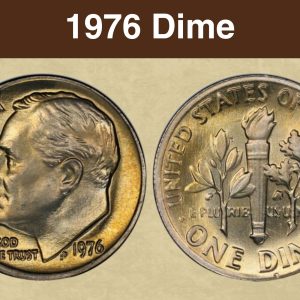
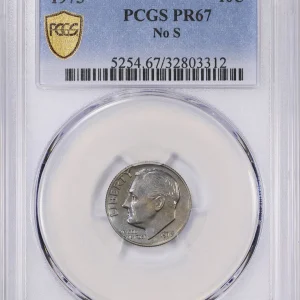
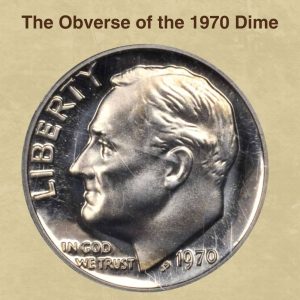
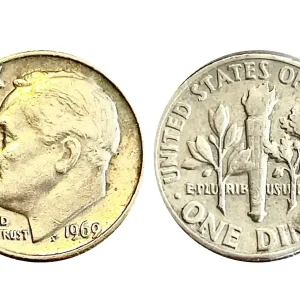
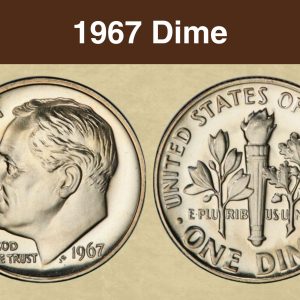
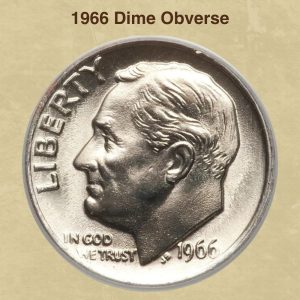
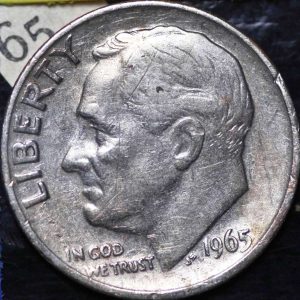
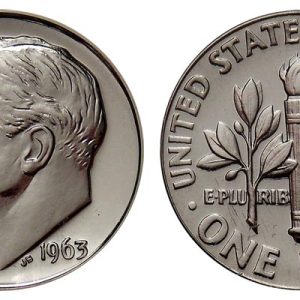
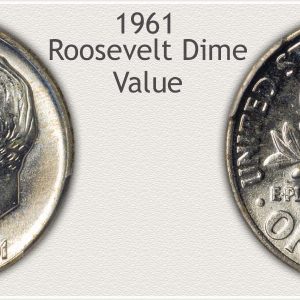
What is the error on a 1964 D dime?
Common 1964-D dime errors include repunched and misplaced mint marks, and various doubled die varieties on the obverse and reverse. Other valuable errors include those resulting from defective planchets, such as lamination or off-center strikes, and errors from struck-through issues, where foreign material like cloth left an impression on the coin.
How to identify 1964 SMS dime?
To identify a rare 1964 SMS dime, look for its signature satin finish and razor-sharp, well-struck details, which are distinct from regular business strike and proof coins. Unlike normal 1964 dimes or proof coins with deep mirror surfaces, SMS dimes have a smooth, matte-like appearance with well-defined rims and lack contact marks. These extremely rare coins were trial strikes intended for a Special Mint Set, not circulation, and are believed to have originated from former Mint Director Eva A…
What errors to look for on dimes?
When looking for valuable dime errors, check for coins with a double die obverse, where features like the date or motto are doubled, as well as errors in the striking process, such as an off-center strike or a broadstrike where the collar is missing. Other errors include missing or clipped planchets, missing clad layers, or striking through debris like cloth (a strikethrough error ).